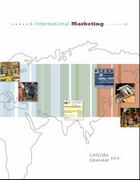Question
TRUE OR FALSE? 1. While it seems odd, Rothbard contends that we buy money with goods and services. 2. Even if we get paid more
TRUE OR FALSE?
1. While it seems odd, Rothbard contends that we buy money with goods and services.
2. Even if we get paid more frequently, as long as our income is unchanged we will still demand the same amount of money.
3. Improvements in the clearing system for checks will decrease the demand for money.
4. It is generally easy to predict when expectations change from deflation to inflation as we move from Mises' Phase I to Phase II.
5. According to Friedman, temporary changes in our incomes will not affect our demand for money.
6. Unlike Keynes' liquidity preference theory, Friedman assumes a negative return to money.
7. Keynes identified the demand for money as coming from the demand for transactions purposes, precautionary purposes and speculative purposes.
8. According to the Keynesian view, when interest rates are relatively low, it is a good time to buy and hold bonds.
9. The aggregate supply (AS) - aggregate demand (AD) model can be used to analyze short run economic events, but not long run changes.
10. According to the quantity theory of money, if the money supply is $3 trillion, the price level is 1.5 and the velocity of money is 2, then the level of real output (or, aggregate output) is 4.
11. The slope of the short run aggregate supply can be explained by noting that higher price levels reduce business profits.
12. Any effect that raises business costs - for example, increased unionization - will shift the short run AS curve to the left.
13. The long run aggregate supply curve is determined by such factors as the amount of labor and the state of technology and it is positively sloped with regard to the price level.
14. When shifts occur to the short run AS there is a self-correcting mechanism that will restore long run equilibrium.
15. As Polleit describes, Mises argued that to stop hyperinflation in Austria in the early 1920s, the government needed to stop printing up more money.
16. Of the hyperinflations cited by Polleit (China, Brazil, Argentina, Russia, Yuhoslavia and Zimbabwe), about half of them were totally unrelated to the fact that their governments controlled a system of fiat money.
17. Krugman believes that the key to making monetary policy effective in the face of a liquidity trap is to change investor's expectations about future monetary policy.
18. While Krugman suggests that monetary policy can be effective in the presence of a liquidity trap, he laments that central bankers suffer from a credibility problem in actually following through with this policy.
19. Shostak cites Krugman as arguing that in the face of a liquidity trap, the Fed should set a lower target for inflation.
20. Shostak argues that a liquidity trap does not emerge from people demanding to hold more money but rather from loose monetary and fiscal policies.
21. Miller argues that there is "never" a lack of demand, as we have infinite wants and only limited resources to fulfill those wants.
22. Miller notes that the recovery that followed the recession of 2008-2009 was the strongest on record since the Great Depression.
Step by Step Solution
There are 3 Steps involved in it
Step: 1

Get Instant Access to Expert-Tailored Solutions
See step-by-step solutions with expert insights and AI powered tools for academic success
Step: 2

Step: 3

Ace Your Homework with AI
Get the answers you need in no time with our AI-driven, step-by-step assistance
Get Started


